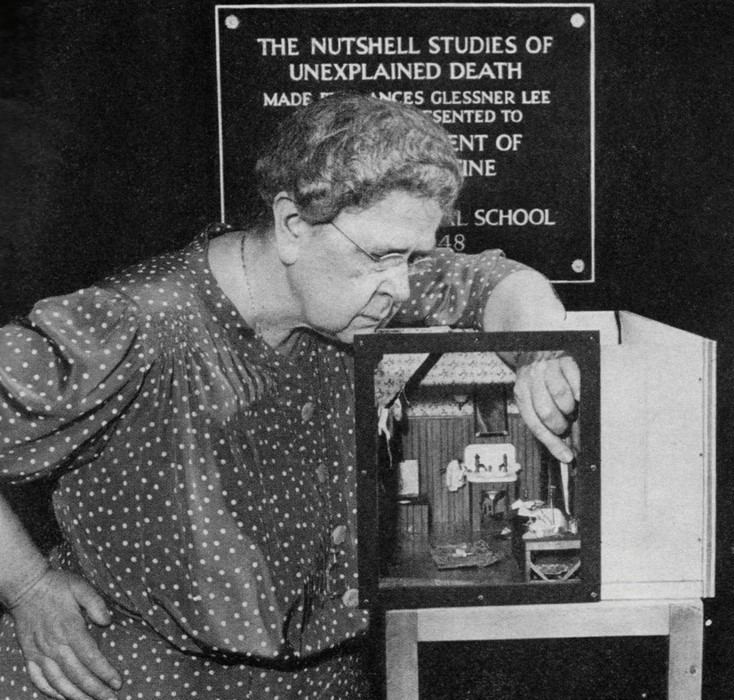Name Frances Lee | ||
Died 1962, Bethlehem, New Hampshire, United States | ||
Frances Glessner Lee (March 25, 1878 – Jan. 27, 1962) was a millionaire heiress who revolutionized the study of crime scene investigation. She founded Harvard's department of legal medicine, the first program in the United States for forensic pathology.
Contents

Biography
She was born in Chicago. Her father, John Jacob Glessner, was an industrialist who became wealthy from International Harvester. She and her brother were educated at home; her brother went to Harvard, but she was not permitted to attend college and instead married a lawyer, Blewett Lee. The marriage ended in divorce. When she expressed interest in forensic pathology years later, she was emphatically discouraged. She had to wait until a year after her brother's death in 1930, when, aged 52, she took her first steps towards her own career.
Personal notes

Glessner Lee's perfectionism and dioramas reflect her family background. Her father was an avid collector of fine furniture, with which he furnished the family home. He wrote a book on the subject, and the family home, designed by Henry Hobson Richardson, is now the John J. Glessner House museum. Glessner Lee was fond of the stories of Sherlock Holmes, whose plot twists were often the result of overlooked details.
Career

She was inspired by a classmate of her brother, George Burgess Magrath, who was studying medicine at Harvard Medical School and was particularly interested in death investigation. They remained close friends until his death in 1938. Magrath became a chief medical examiner in Boston and together they lobbied to have coroners replaced by medical professionals. Glessner Lee endowed the Harvard department of legal medicine (in 1931, the first such department in the country), a chair in the field, the George Burgess Magrath Library, and Harvard Associates in Police Science, a national organization for the furtherance of forensic science, one division of which is the Frances Glessner Lee Homicide School. The Harvard program influenced other states to change over from the coroner system. Magrath became the department's first Chair.

Through the 1940s and 1950s, Lee hosted a series of semi-annual seminars in homicide investigation. Detectives, prosecutors and other investigators were invited to a week-long conference, where she presented them with the "Nutshell Studies of Unexplained Death," intricately constructed dioramas of actual crime scenes, complete with working doors, windows and lights. They had 90 minutes to study the scene. The week culminated in a banquet at the Ritz Carlton. The 18 dioramas are still used for training purposes by Harvard Associates in Police Science.
For her work, Lee was made an honorary captain in the New Hampshire State Police in 1943, the first woman in the US to hold that rank.
